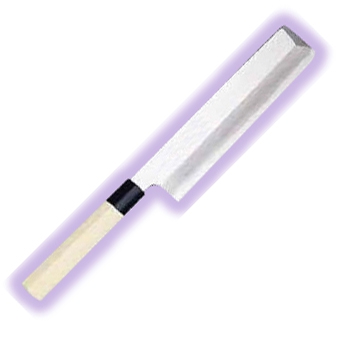Vegetable Knife(Usuba) Selections
-
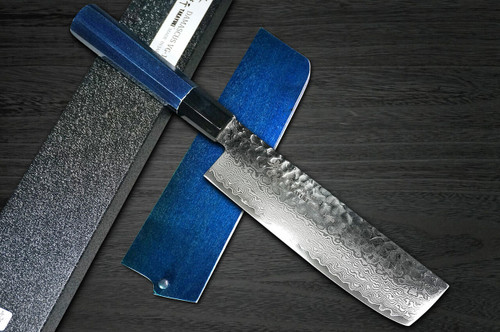
-

-
On Sale

-
On Sale
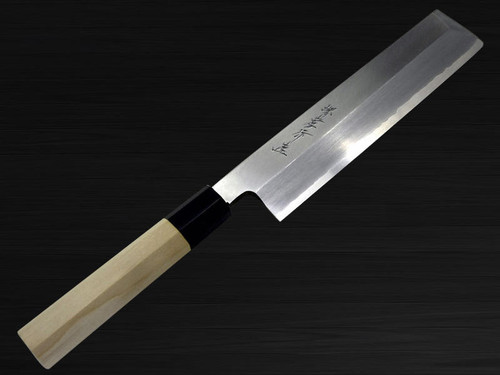
-
On Sale

-
On Sale

-
On Sale

-

-

-
On Sale
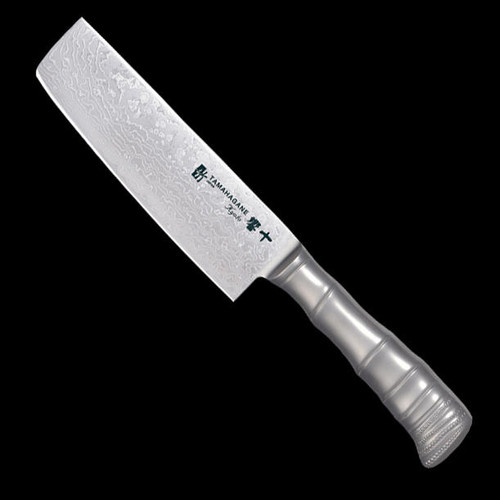
-
On Sale

-
On Sale

-
On Sale

-

-

-
On Sale

-
On Sale
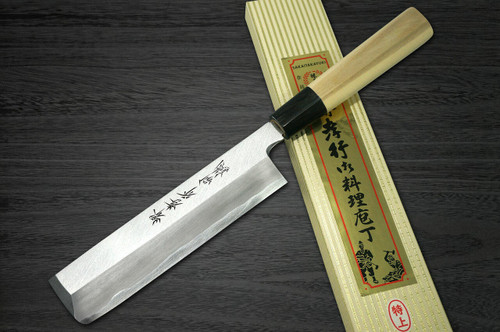
-
On Sale

-
On Sale

-
On Sale

-
On Sale

-
On Sale
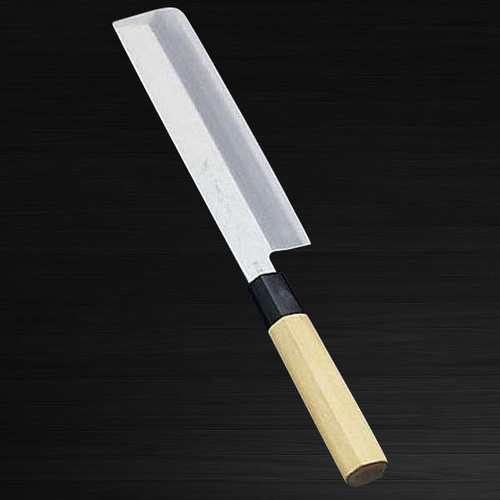
-
On Sale
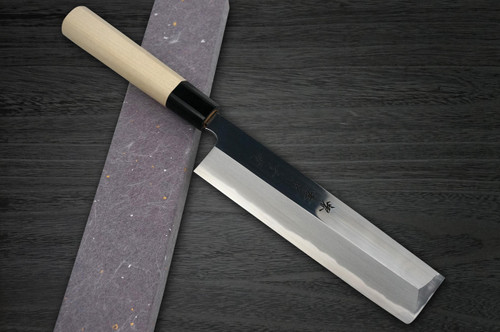
-
On Sale
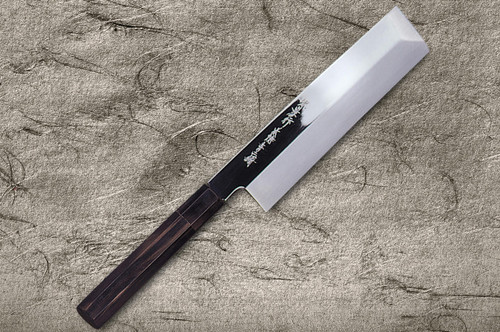
-
On Sale
![Sakai Takayuki INOX Japanese-style Nanairo Chef's Usuba(Vegetable) 210mm ABS Resin Handle [Green-Tortoiseshell] Sakai Takayuki INOX Japanese-style Nanairo Chef's Usuba(Vegetable) 210mm ABS Resin Handle [Green-Tortoiseshell]](https://cdn11.bigcommerce.com/s-attnwxa/images/stencil/500x659/products/5590/218102/sakai-takayuki-inox-japanese-style-nanairo-chefs-usubavegetable-210mm-abs-resin-handle-green-tortoiseshell__05384.1672695818.jpg?c=2)
-
On Sale
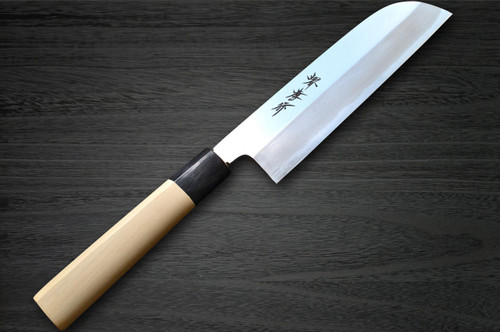
-
On Sale
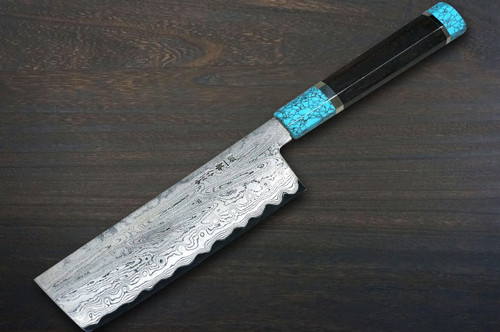
-
On Sale
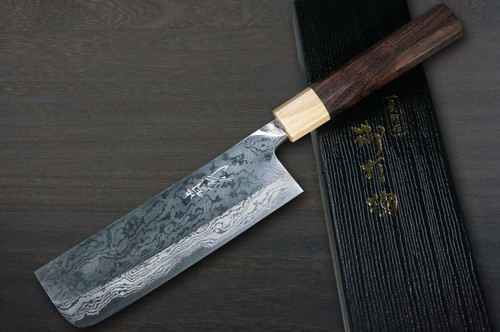
-
On Sale
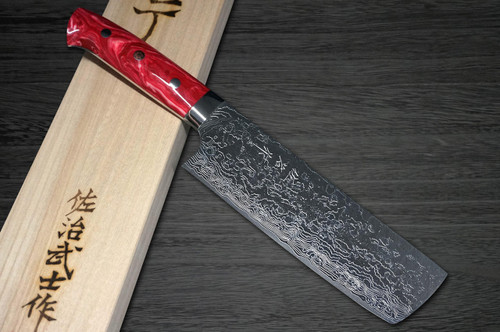
-
On Sale
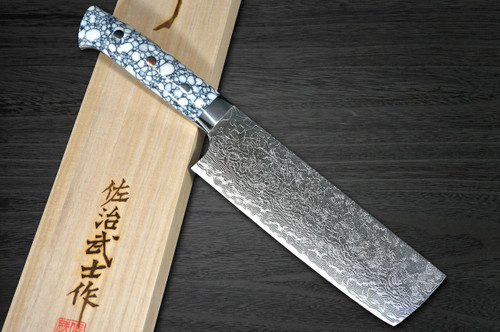
-
On Sale

-
![[Left Handed] Sakai Takayuki Kasumitogi Buffalo Tsuba Japanese Chef's Kamagata-Usuba(Vegetable) 165mm [Left Handed] Sakai Takayuki Kasumitogi Buffalo Tsuba Japanese Chef's Kamagata-Usuba(Vegetable) 165mm](https://cdn11.bigcommerce.com/s-attnwxa/images/stencil/500x659/products/5686/221962/sakai-takayuki-left-handed-sakai-takayuki-kasumitogi-buffalo-tsuba-japanese-chefs-kamagata-usubavegetable-165mm__10768.1677798700.jpg?c=2)
-
![[Left Handed] Sakai Takayuki Kasumitogi Buffalo Tsuba Japanese Chef's Kamagata-Usuba(Vegetable) 180mm [Left Handed] Sakai Takayuki Kasumitogi Buffalo Tsuba Japanese Chef's Kamagata-Usuba(Vegetable) 180mm](https://cdn11.bigcommerce.com/s-attnwxa/images/stencil/500x659/products/5687/222131/sakai-takayuki-left-handed-sakai-takayuki-kasumitogi-buffalo-tsuba-japanese-chefs-kamagata-usubavegetable-180mm__77082.1677799089.jpg?c=2)
-
On Sale
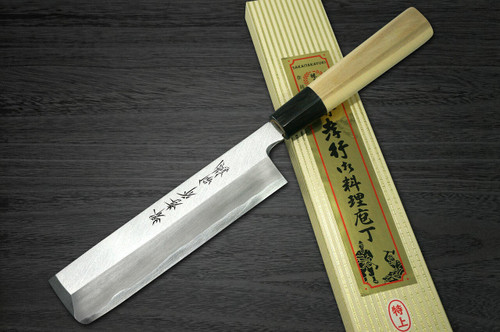
-
On Sale

-
On Sale

-
On Sale

-
On Sale

-
On Sale

-
On Sale
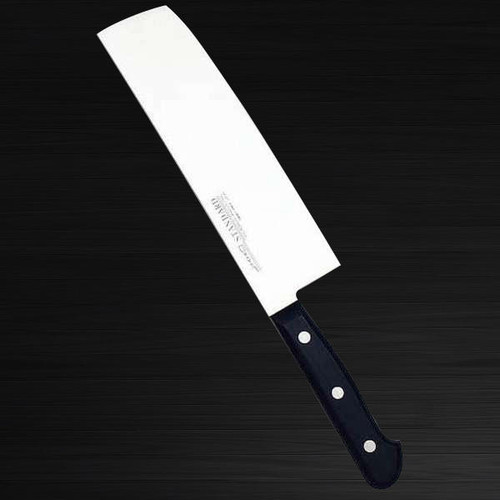
-
On Sale

-
On Sale
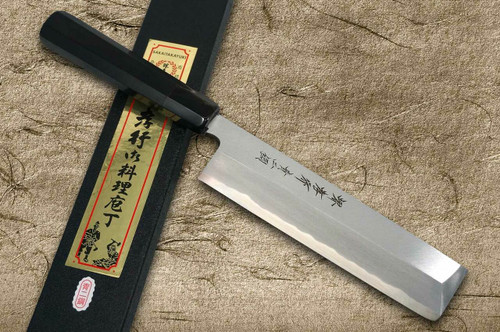
-
On Sale
![Sakai Takayuki INOX Japanese-style Nanairo Chef's Usuba(Vegetable) 165mm ABS Resin Handle [Green-Tortoiseshell] Sakai Takayuki INOX Japanese-style Nanairo Chef's Usuba(Vegetable) 165mm ABS Resin Handle [Green-Tortoiseshell]](https://cdn11.bigcommerce.com/s-attnwxa/images/stencil/500x659/products/5588/218177/sakai-takayuki-inox-japanese-style-nanairo-chefs-usubavegetable-165mm-abs-resin-handle-green-tortoiseshell__07060.1672695898.jpg?c=2)
-
On Sale
![Sakai Takayuki INOX Japanese-style Nanairo Chef's Usuba(Vegetable) 180mm ABS Resin Handle [Green-Tortoiseshell] Sakai Takayuki INOX Japanese-style Nanairo Chef's Usuba(Vegetable) 180mm ABS Resin Handle [Green-Tortoiseshell]](https://cdn11.bigcommerce.com/s-attnwxa/images/stencil/500x659/products/5589/218063/sakai-takayuki-inox-japanese-style-nanairo-chefs-usubavegetable-180mm-abs-resin-handle-green-tortoiseshell__68712.1672695773.jpg?c=2)
-
On Sale
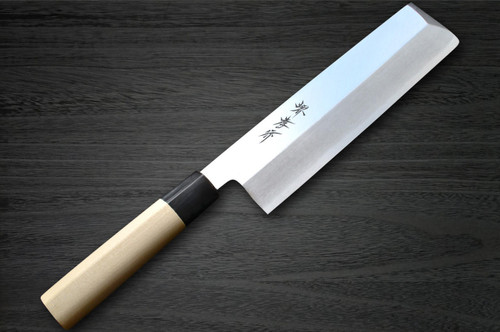
-
On Sale

-
On Sale

-
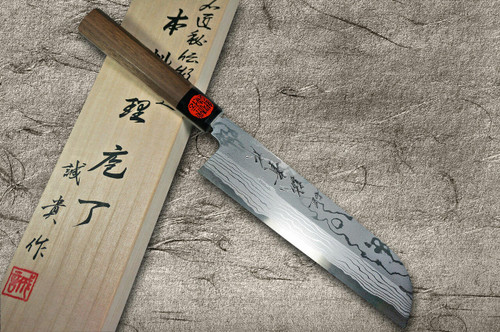
-

-
On Sale

-

-
On Sale

-

-
On Sale

-
On Sale
![[Left Handed] Sakai Takayuki Kasumitogi Buffalo Tsuba Japanese Chef's Kamagata-Usuba(Vegetable) 150mm [Left Handed] Sakai Takayuki Kasumitogi Buffalo Tsuba Japanese Chef's Kamagata-Usuba(Vegetable) 150mm](https://cdn11.bigcommerce.com/s-attnwxa/images/stencil/500x659/products/5685/222267/sakai-takayuki-left-handed-sakai-takayuki-kasumitogi-buffalo-tsuba-japanese-chefs-kamagata-usubavegetable-150mm__21562.1677799418.jpg?c=2)
-
![[Left Handed] Sakai Takayuki Kasumitogi Buffalo Tsuba Japanese Chef's Usuba(Vegetable) 195mm [Left Handed] Sakai Takayuki Kasumitogi Buffalo Tsuba Japanese Chef's Usuba(Vegetable) 195mm](https://cdn11.bigcommerce.com/s-attnwxa/images/stencil/500x659/products/5695/222014/sakai-takayuki-left-handed-sakai-takayuki-kasumitogi-buffalo-tsuba-japanese-chefs-usubavegetable-195mm__77350.1677798804.jpg?c=2)
-
On Sale

-
On Sale

-
On Sale

-
On Sale

-
On Sale
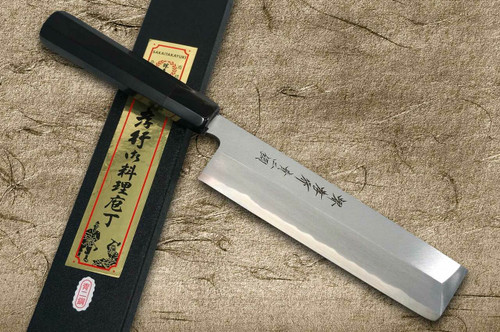
-
On Sale
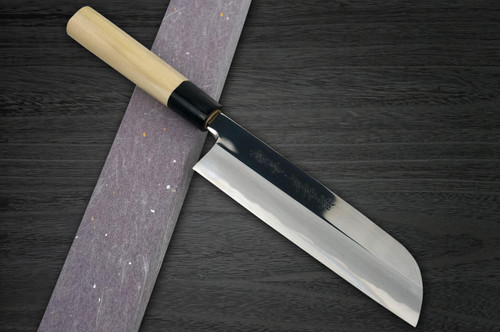
-
On Sale
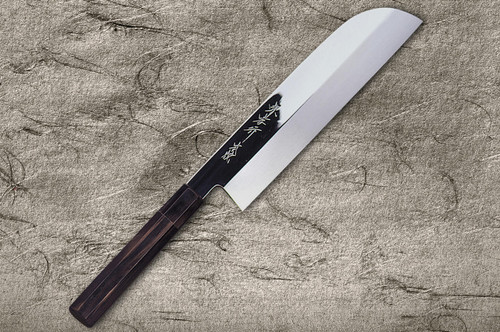
-
On Sale
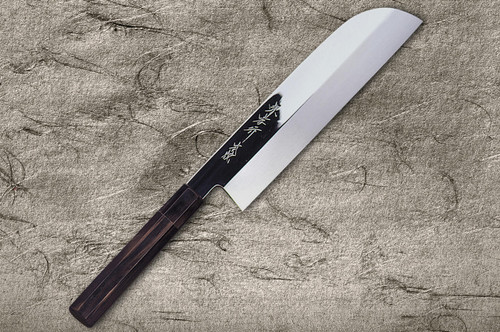
-
On Sale
![Sakai Takayuki INOX Japanese-style Nanairo Chef's Usuba(Vegetable) 165mm ABS Resin Handle [Blue-Tortoiseshell] Sakai Takayuki INOX Japanese-style Nanairo Chef's Usuba(Vegetable) 165mm ABS Resin Handle [Blue-Tortoiseshell]](https://cdn11.bigcommerce.com/s-attnwxa/images/stencil/500x659/products/5585/218107/sakai-takayuki-inox-japanese-style-nanairo-chefs-usubavegetable-165mm-abs-resin-handle-blue-tortoiseshell__75893.1672695824.jpg?c=2)
-
On Sale
![Sakai Takayuki INOX Japanese-style Nanairo Chef's Usuba(Vegetable) 210mm ABS Resin Handle [Wine-Tortoiseshell] Sakai Takayuki INOX Japanese-style Nanairo Chef's Usuba(Vegetable) 210mm ABS Resin Handle [Wine-Tortoiseshell]](https://cdn11.bigcommerce.com/s-attnwxa/images/stencil/500x659/products/5593/218103/sakai-takayuki-inox-japanese-style-nanairo-chefs-usubavegetable-210mm-abs-resin-handle-wine-tortoiseshell__52244.1672695819.jpg?c=2)
-
On Sale

-
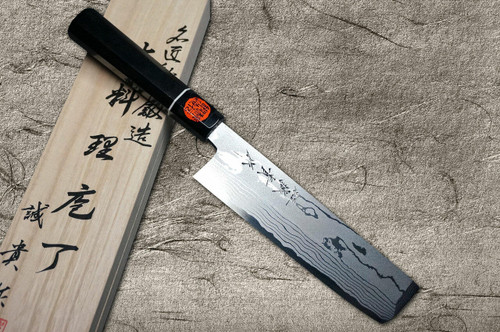
-
On Sale

-
On Sale
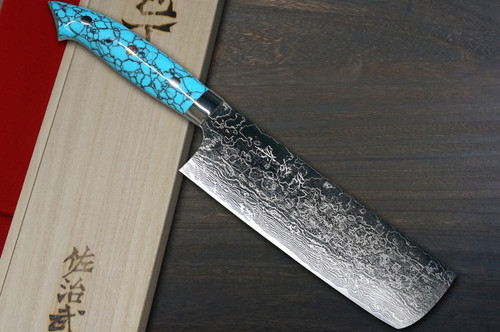
-

-
On Sale

-
On Sale
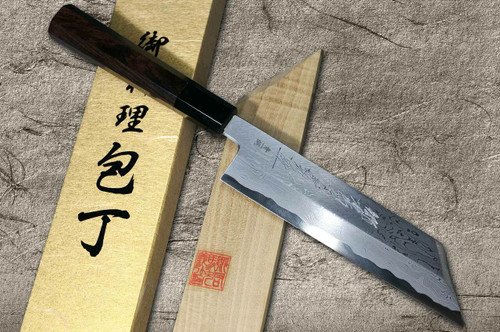
-
On Sale

-
On Sale

Pros and Cons of Vegetable Knives and Top 5 Best-Selling Products
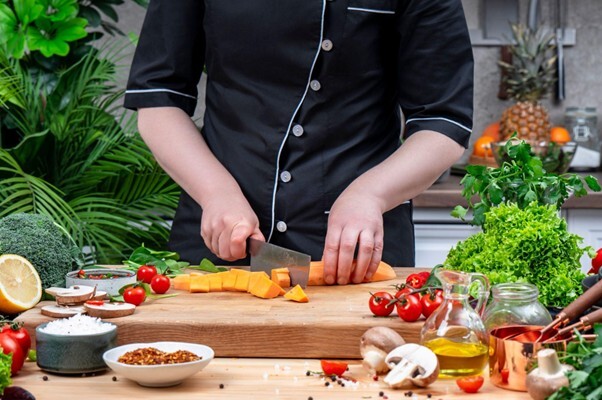
"What exactly is a vegetable knife?"
"Is a vegetable knife really necessary?"
"I don't know which vegetable knife to choose"
Do you have these concerns?
A vegetable knife is a traditional Japanese knife specialized for cutting vegetables. If you can cleanly sever vegetable fibers with a vegetable knife the cross-section beautiful,will be making efficient cooking easier.
Therefore, this article explains the basics, how to choose, and recommended products for those considering purchasing a vegetable knife. Please read to the end for reference on selecting a vegetable knife and improving your vegetable preparation efficiency.
What is a Nakiri Knife?
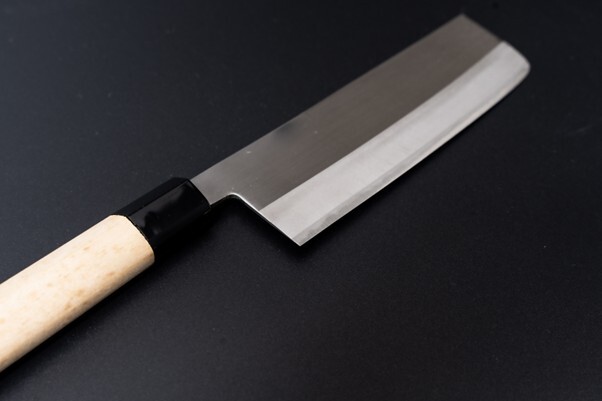
A nakiri knife is a traditional Japanese knife specialized for cutting vegetables.
Its defining features are a thin, wide rectangular blade. This shape allows for efficient vegetable cutting. Compared to standard knives, its flat tip makes it easy to cut vertically against the cutting board.
It excels at vegetable preparation tasks like julienning cabbage, slicing daikon radish into rounds, and finely chopping green onions. Its thin blade also minimizes resistance against ingredients, enabling clean, even cuts.
The vegetable knife is cherished by many chefs and home cooks as a specialized tool that enhances efficiency in vegetable preparation.
Differences Between a Nakiri Knife and a Chinese Cleaver
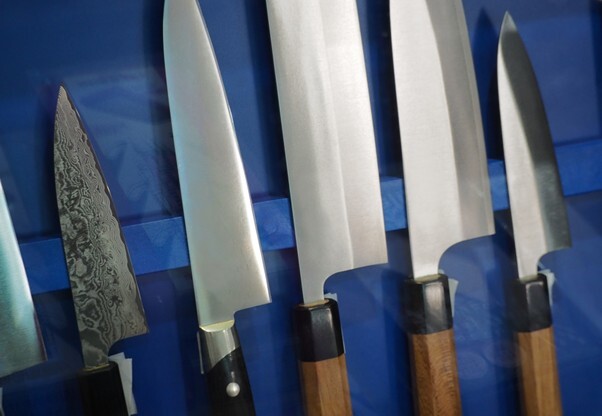
A comparison table of the differences between a vegetable knife and a Chinese cleaver is shown below.
| Item | Vegetable Knife | Chinese cleaver |
|---|---|---|
| Blade Length | 15 – 18cm | 20 – 25cm |
| Blade Width | 4 – 5 cm | 6 – 8 cm |
| Weight | 100 – 150g | 300 – 500g |
| Blade Thickness | Thin | Thick |
| Primary Use | Vegetables only | All-purpose (meat, fish, vegetables) |
| Cutting Performance | Delicate and precise | Powerful and robust |
Vegetable knives and Chinese cleavers differ significantly in shape, weight, and purpose.
- Differences in Shape and Size
- Weight and Thickness Differences
- Differences in Purpose and Sharpness
We'll explain each one
Differences in Shape and Size
The vegetable knife has a blade length of approximately 15 to 18 cm and a blade width of 4 to 5 cm, forming a rectangular shape. On the other hand, the Chinese cleaver has length of 20 to a longer blade 25 cm and a larger blade width of 6 to 8 cm, forming a larger rectangle.
For example, the vegetable knife is a compact size suitable for home cutting boards, while the Chinese cleaver is a large size designed for use in professional kitchens. This size difference significantly impacts ease of handling and work efficiency.
Weight and Thickness Differences
The vegetable knife features a lightweight, thin blade, weighing approximately 100– 150g. In contrast, the Chinese cleaver has a thick, heavy blade, weighing 300–500g.
For example, a vegetable knife offers a light, nimble feel ideal for delicate vegetable cutting, while a Chinese cleaver can handle tasks like cutting through bone-in meat, leveraging its weight. This weight difference leads to significant variations in fatigue levels and intended uses.
Differences in Purpose and Cutting Performance
The vegetable knife is designed specifically for vegetables, featuring a thin blade that delivers a delicate cut. Conversely, the Chinese cleaver serves as an all-purpose knife, handling meat, fish, and vegetables alike, with its thick blade providing powerful cutting force.
For example, a vegetable knife excels at precise tasks like julienning cabbage or peeling daikon radish into thin strips. A Chinese cleaver, however, can handle a wide range of tasks, from cutting through chicken bones to rough chopping vegetables. This difference in specialization versus versatility defines each knife's unique character.
Benefits of the Nakiri Knife
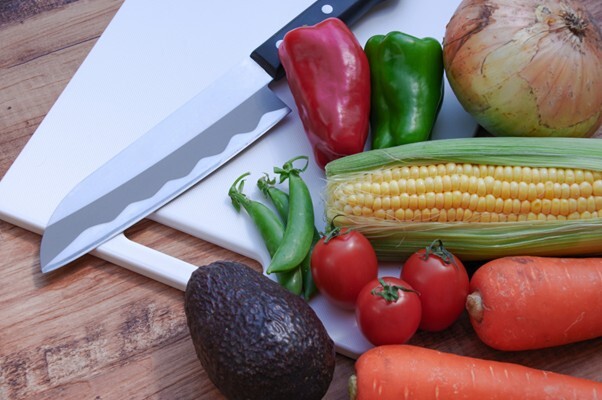
There are four major benefits to using a vegetable knife.
- Benefit 1: Efficiency Specialized for Cutting Vegetables
- Benefit 2: Produces Beautiful, Clean Cuts
- Benefit 3: Lightweight and Easy to Handle
- Benefit 4: Excellent contact with the cutting board
Let's explain each one.
Benefit 1: Efficiency specialized for vegetable cutting
The greatest advantage of a vegetable knife is its high efficiency, specifically designed for cutting vegetables.
Its thin, wide blade is ideally shaped for severing vegetable fibers. When slicing cabbage into thin strips, you can cut multiple leaves at once. When slicing daikon radish into rounds, you can achieve uniform thickness quickly.
Compared to a standard utility knife, it can cut a whole cabbage into thin shreds in about half the time. The wide blade also makes scooping up cut vegetables easy. For households that frequently prepare vegetable dishes, this leads to a significant reduction in cooking time.
Benefit 2: Produces Beautifully Clean Cuts
Using a vegetable slicing knife produces exceptionally beautiful cross-sections on vegetables.
The thin blade offers minimal resistance to the ingredients, allowing clean cuts without crushing the cells. When slicing onions, it causes fewer tears, and with tomatoes, less juice flows out.
This dramatically improves the appearance of dishes, achieving the beautiful cut surfaces particularly valued in Japanese cuisine. The clean cross-sections also enhance the overall presentation of vegetable salads and simmered dishes. The knife minimizes loss of the ingredients' natural flavors, allowing their quality to shine through.
Benefit 3: Lightweight and Easy to Handle
Vegetable knives are lightweight, typically weighing 100–- 150gmaking them less tiring to use during extended periods of work.
Compared to heavier knives, it places less strain on the wrist, making it suitable for women and seniors without discomfort.
Its light weight also makes it ideal for detailed work, allowing precise handling of delicate tasks like finely chopping green onions or julienning ginger.
The stable grip makes it safe even for beginners. Its low fatigue factor during daily cooking is a major advantage.
Benefit 4: Excellent contact with cutting boards
The vegetable knife has a flat blade tip, providing excellent contact with the cutting board.
Unlike the curved tip of a standard knife, the vegetable knife's entire blade contacts the cutting board. This feature allows you to cut vegetables completely without waste, preventing ingredient loss.
Even thin ingredients like herbs or green onions can be neatly trimmed without leaving any behind. The close contact with the cutting board enables stable cutting and reduces the risk of injury.
The blade easily penetrates between the ingredient and the board, allowing for efficient and safe cooking.
Disadvantages of the Nakiri Knife
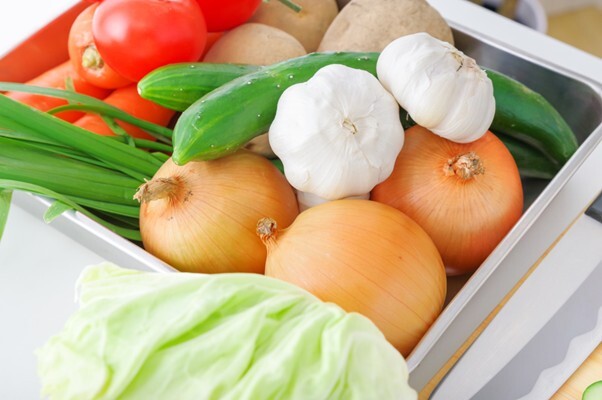
There are two main disadvantages to the nakiri knife.
- Disadvantage 1: Limited to Vegetables
- Disadvantage 2: Requires Regular Maintenance
Let's explain each one.
Disadvantage 1: Limited to Vegetables
Designed exclusively for vegetables, vegetable knives are unsuitable for preparing meat or fish.
Their thin blades are vulnerable to bones and tough sinews; forcing them can cause chipping.
Therefore, a different knife (e.g., a Santoku knife or a chef's knife) is required for handling meat or fish. This necessitates having multiple knives in the kitchen, which can be a drawback in terms of storage space and increased cost.
Disadvantage 2: Requires regular maintenance
Vegetable knives have thin blades, making regular maintenance essential.
To maintain sharpness, sharpening is needed about once or twice a month. While the thin blade achieves a sharp edge, it is also prone to chipping, requiring more frequent sharpening. For steel nakiri knives, rust prevention is also crucial; after use, they must be wiped dry and stored properly. Neglecting maintenance significantly reduces sharpness, the knife as intended.
How to Choose a Nakiri Knife
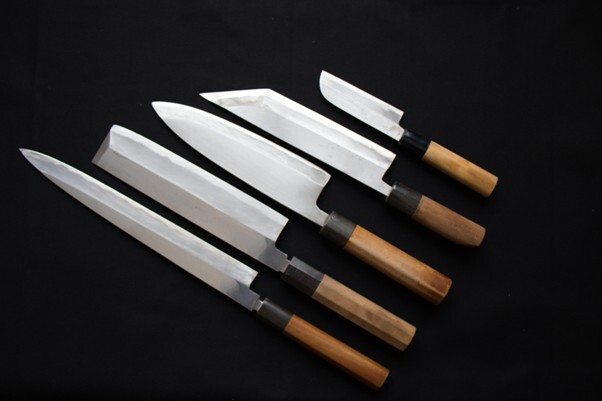
There are four main points to consider when selecting a vegetable knife.
- Choose by Blade Length
- Choose by Material (Steel/Stainless Steel)
- Select by Single-Edged or Double-Edged
- Choosing by Budget and Price Range
Let's explain each one.
Choosing by Blade Length
The ease of use for a vegetable knife varies significantly depending on the blade length.
For home use, 15– 16cm is the most manageable size. This size fits standard cutting boards well and handles everyday vegetable prep like shredding cabbage or slicing daikon radish.
Longer sizes of 17– 18cm are suitable for households frequently handling large vegetables or prioritizing efficient cooking.
Short types under 14cm offer excellent storage efficiency but are unsuitable for large vegetables. Long types over 19cm are closer to commercial use and may be unwieldy for home kitchens. It's important to choose based on the size of frequently used vegetables.
Choosing by Material (Steel/Stainless Steel)
Choosing the right material for a vegetable knife is crucial based on your usage style.
Steel blades offer exceptional sharpness, cleanly severing vegetable fibers. This material is favored by professional chefs and, with proper maintenance, can last for many years. However, it is prone to rust, requiring thorough drying after each use.
Stainless steel knives are rust-resistant and easy to maintain, making them ideal for beginners. Many models are dishwasher-safe, suitable for daily use. While their sharpness is slightly inferior to carbon steel, they offer sufficient performance for home use. Consider the maintenance effort when making your choice.
Choosing Single-Edged or Double-Edged
Vegetable knives differ in cutting style and usability between single-edged and double-edged blades.
Single-edged knives cut ingredients straight through, producing a clean, beautiful cross-section. They are well-suited for Japanese cuisine preparation and excel at delicate tasks like peeling daikon radish into thin strips or slicing cucumbers thinly. However, they are limited to one handedness, requiring left-handed individuals to use specialized knives.
Double-edged knives split ingredients cleanly and feel like a standard kitchen knife. They are ambidextrous and easier for beginners to handle. For everyday home use, double-edged knives are more practical. It's important to choose based on your cooking style and skill level.
Choosing by Budget and Price Range
Vegetable knives vary significantly in performance and features across price ranges.
The entry-level price range of USD30 to 70 primarily features stainless steel double-edged types. These offer sufficient performance for basic vegetable cutting at home, are easy to maintain, and are recommended for beginners.
In the mid-range price bracket of USD70 to 150, you'll find products using composite materials of carbon steel and stainless steel, or high-quality stainless steel.
In the premium price range above USD150, you can choose authentic, handcrafted steel vegetable knives made by artisans. They offer exceptional sharpness but require technical skill for maintenance. It's important to consider your usage frequency and desired performance, and choose within a budget that doesn't strain your finances.
Top-selling Nakiri Knives

Here are the top-selling nakiri knives in order of popularity.
- 1st : Iseya I Series 33-Layer VG-10 Damascus Steel
- 2nd : Kanetsune KC-950 DSR-1K6 Stainless Steel
- 3rd : Sakai Takayuki 33-Layer VG10 Damascus Steel
- 4th : Fujijiro DP 3-Layer VG10
- 5th : Sakai Takayuki 33-Layer VG10 Damascus WA Japanese Knife
Let's go through each one.
1st : Iseya I Series 33-Layer VG-10 Damascus Steel
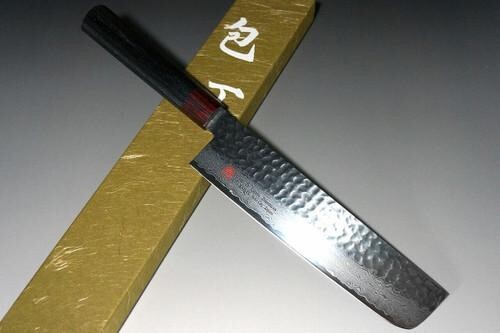
Price: $150.99 | Manufacturer: Seto Hamono Seisakusho (Made in Japan)
Blade Material: VG-10 Core + 33-Layer Damascus Steel (Tsumugi Finish)
Hardness: HRC 60–61
Size: Blade Length 180mm / Overall Length 315mm / Weight 170g
Handle: Black plywood D-handle with bamboo carving
[Features]
- Professional-grade high hardness and sharpness
- Hammered finish prevents food sticking
- Double-edged design accommodates both left and right-handed users
【Recommended For】
- Intermediate to advanced users who value both the presentation of their dishes and the beauty of their knives
- Those seeking both luxury and practicality
▶ Product Page: HOCHO KNIFE|Iseya I Series 33-Layer VG-10 Damascus Steel Hammered Finish Made in Japan Chef's Vegetable Knife 180mm
2nd : Kanetsune KC-950 DSR-1K6 Stainless Steel
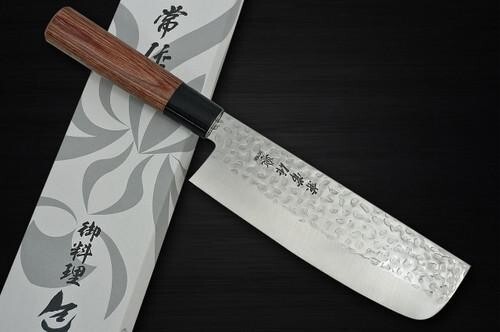
Price: $44.99|Manufacturer: Hokusei Co., Ltd. (Made in Japan)
Blade Material: DSR-1K6 High Carbon Stainless Steel
Hardness: HRC 58–59
Size: Blade Length 165mm / Overall Length 295mm / Weight 145g
Handle: Plywood + Plastic Bolster
【Features】
- Rust-resistant and easy to maintain
- Beautiful hammered pattern and high durability
- Double-edged construction makes it easy for beginners to handle
【Recommended For】
- First-time vegetable knife buyers
- Those seeking a reliable knife with great value
▶ Product Page: HOCHO KNIFE|Kanetsune KC-950 DSR-1K6 Stainless Steel Hammered Pattern Japanese Chef's Vegetable Knife (Vegetables) 165mm
3rd : Sakai Takayuki 33-Layer VG10 Damascus Steel
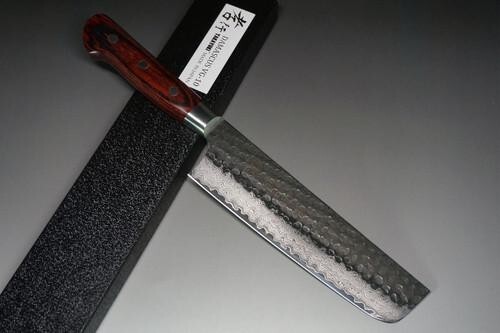
Price: $215.99|Manufacturer: Aoki Hamono Seisakusho (Made in Japan)
Blade Material: VG10 Alloy Core + 33-Layer Damascus Steel
Hardness: HRC 60 ±1
Size: Blade Length 160mm / Overall Length 300mm / Weight 190g
Handle: High-water-resistant mahogany (hand-finished)
【Features】
- Artisan-finished premium model
- Sharp cutting edge from the factory
- Well-balanced center of gravity and handling
【Recommended For】
- Those who want professional-grade knives for home use
- Cooking enthusiasts prioritizing sharpness and premium feel
▶ Product Page: HOCHO KNIFE|Sakai Takayuki 33-Layer VG10 Damascus Steel Hammered Finish Made in Japan Chef's Knife Vegetable Knife 160mm
4th : Fujijiro DP 3-Layer VG10
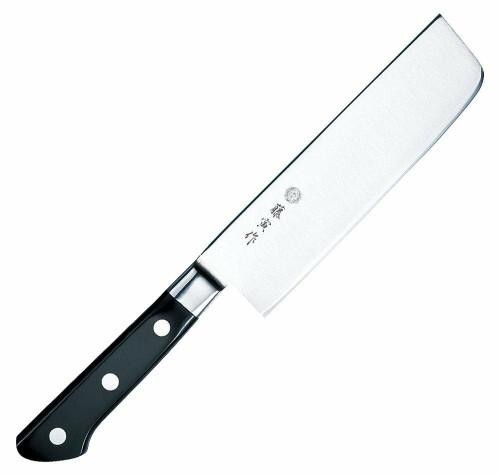
Price: $82.99|Manufacturer: Fujijiro Co., Ltd. (Made in Japan)
Blade Material: VG-10 Core + 3-Layer Stainless Steel
Hardness: HRC 60 ±1
Size: Blade Length 165mm / Overall Length 295mm / Weight 180g
Handle: Stamina Wood + Metal Bolster
【Features】
- Versatile and ideal for everyday use
- Dishwasher-safe, high-durability design
- Easy to handle and well-balanced
【Recommended for】
- Those seeking a reliable knife for home use
- Those prioritizing a balance between ease of maintenance and sharpness
▶ Product Page: HOCHO KNIFE|Fujijiro (Fujitora) DP 3-Layer Steel VG10 Made in Japan Chef's Vegetable Knife 165mm
5th : Sakai Takayuki 33-Layer VG10 Damascus WA Japanese Kitchen Knife
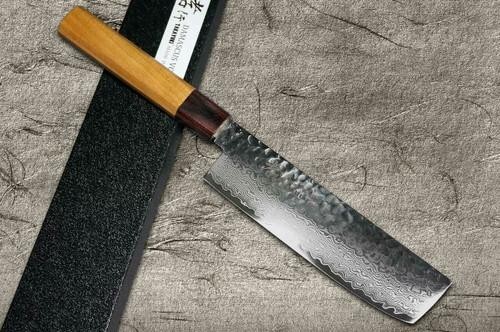
Price: $163.99|Manufacturer: Aoki Hamono Seisakusho (Made in Japan)
Blade Material: VG10 Core + 33-Layer Damascus Steel
Hardness: HRC 60–61
Size: Blade Length 160mm / Overall Length 315mm / Weight 140g
Handle: Zelkova wood (semi-circular octagonal) + Mahogany guard
[Features]
- The beauty of traditional Japanese knives
- Lightweight and highly durable for reduced fatigue
- Refined design and comfortable feel
【Recommended For】
- Those seeking a knife that complements Japanese cuisine
- Those seeking both design appeal and effortless cutting performance
▶ Product Page: HOCHO KNIFE|Sakai Takayuki 33-Layer VG10 Damascus Hammered Finish WA-Style Vegetable Knife (160mm)
A knife often compared to the nakiri knife (vegetable knife)
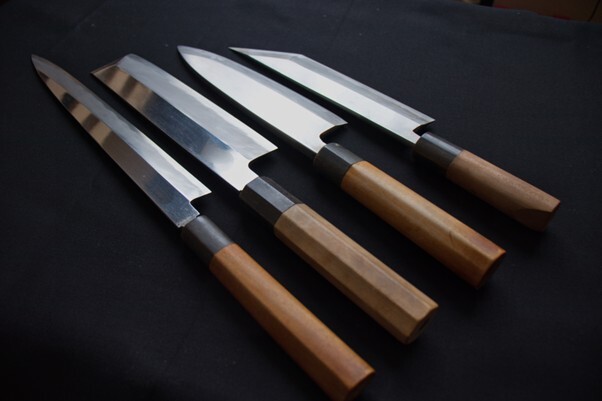
Here's a knife often compared when considering a vegetable knife.
- Santoku Knife
- Gyuto
We'll explain each one.
Santoku knife
The Santoku knife is most commonly compared to the vegetable knife.
The Santoku knife is popular as a versatile knife that can handle meat, fish, and vegetables all with one blade. Many people considering a vegetable knife wonder, "If I canknife get by with just one , wouldn't the Santoku knife be better?" They are similarly priced, and there's the advantage of needing only one knife for storage space.
A vegetable knife is best suited for those who frequently prepare vegetable dishes or have specific preferences for how vegetables are cut. Those who cook meat and fish dishes in a balanced way, or who want to minimize the number of knives they own, should choose a Santoku knife.
Chef's Knife
Those who frequently prepare Western-style dishes often compare it to a chef's knife.
The chef's knife is a Western-style knife specialized for cutting meat, yet it also offers versatility for vegetable preparation. With a blade length of 18– 24cm, it's well-suited for handling large vegetables. Since Western restaurants often manage most cooking tasks with just one chef's knife, many home cooks desire the same versatility.
For those primarily preparing Japanese cuisine or prioritizing delicate vegetable cutting, a vegetable knife is more suitable. Those frequently cooking Western-style dishes or balancing meat and vegetable preparations should opt for a Western-style chef's knife.



